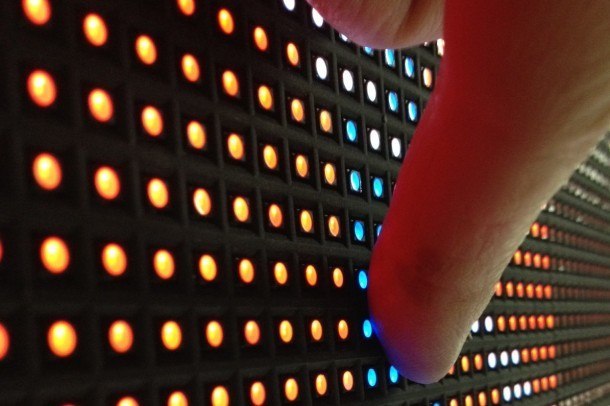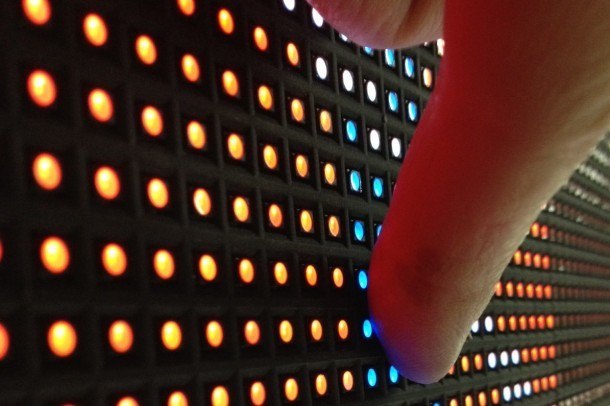
Decoding Pixel Pitch In LED Displays
February 26, 2014 by guest author, Emily Ingram

Guest Post: Brett Farley, NanoLumens
Pixel Pitch, what is it? Why do I care?
Well … the short answer is you don’t care, unless you’re going to be evaluating LED display technology for an indoor or outdoor application.
In order to talk about the “pitch” one has to first define a pixel. For conversational purposes, a pixel is the smallest controllable element in a raster image. A pixel in the LED world is either an SMD tricolor lamp or a discrete individual LED. While you could apply the term to LCD technology, it’s almost exclusively reserved for conversations involving LED displays.
High resolution, high definition, pixel density, pixel pitch, and so on … what do all these terms mean as it relates to your potential digital display? These terms and the thought process behind them needs to be placed in the proper context for investigating LED display technology for your particular application or project.
AV professionals frequently ask irrelevant questions when trying to ascertain whether a large-format LED display of a particular dimension will deliver the content clarity and sharpness they require for an application. This is largely a result of their comfort and experience in using incumbent LCD and projection technology terminology, inherited from earlier generations of resolution parlance.
We hear questions such as: “Are your displays Hi-Def? Are your displays 4K? Are your displays true HD?” But they don’t really have a lot of relevance when evaluating SMD or discreet LED display technology.
COMMON SENSE REQUIRED
The competent approach to whether or not LED will work for your display application comes down to this: Use your common sense.
Any SMD LED display of a certain size and aspect ratio will appear to be HD to your viewer if it’s come out of high-quality manufacturing. It will depend on how far from the display your viewer is, the total amount of wall or surface real estate that is covered, the content and how it was created and mapped to the display. It may even have to do whether the LED packages are whiteface or blackface.
I’ll give you an example: A typical pixel pitch for an indoor LED display, with a minimum viewing distance of 15 feet, would be a 4mm or 5mm class. So, let’s take the 4mm class and assume a pixel pitch of 4.5 mm. Now, let’s answer the question “Are your displays True HD?”
The answer is yes, if it’s 28 ¼ feet long and almost 16 feet high and it’s a 16:9 aspect ratio display. There are 68 pixels per linear foot for a 4.5mm pixel pitch display. Translate that information into a 1920 x 1080 resolution, and you have a True HD LED display.
GOING 4K?
Now ask the question “Are your displays 4K?” Now you’re talking about a 60-plus foot long display if you’re using 4.5mm pixel pitch.
Recall again that pixel pitch is defined as the distance between the centers of the individual pixels vertically, horizontally or diagonally on the surface of an LED display. The higher the density of pixels, the closer you can get to the display before the image/video begins to pixelate.
So naturally, pixel pitch matters. But what matters more is what you’re trying to accomplish. What is the application trying to do? Do you really need a 4K display resolution for a 10-second viewer interaction showing high-resolution fashion photography to people streaming into a subway station?
And if you think you do, will you even have 4K content to deliver to the display?
Common sense should win the day when evaluating LED display technology. Look at the big picture, and have a professional familiar with developing these applications help you through the evaluation process.
[infobox bg=”bluelight” color=”black” opacity=”on” subtitle=”Yup. We welcome smart, insightful ideas and opinions from other writers who work in and know this sector. SEO people need not apply. Contact Dave Haynes.”]GUEST POSTS[/infobox]



Leave a comment